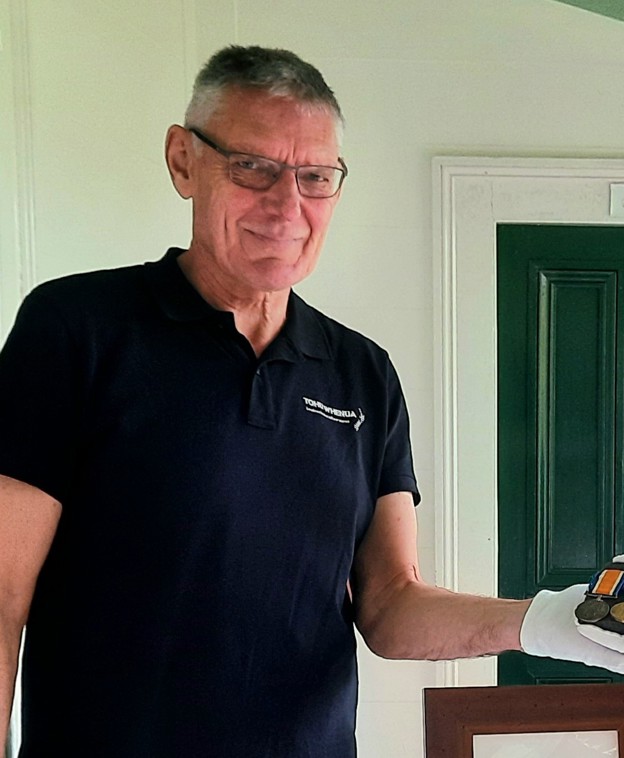Clendon papers added to UNESCO register
A unique collection of family papers spanning almost 150 years, and covering watershed moments in the formation of modern New Zealand, has been added to the UNESCO Aotearoa New Zealand Memory of the World register.
UNESCO recently officially recognised the Clendon Collection, papers associated with James Reddy Clendon and his descendants – including Clendon’s second wife Jane Takotowi Cochrane – as an assemblage of recorded heritage that has national significance.
The proposal to add the collection to the Memory of the World was supported by Clendon descendants of both his first wife Sarah, and Jane.

The papers are jointly held at Auckland Libraries Ngā Pātaka Kōrero o Tāmaki Makaurau and Clendon House in Rawene, a historic property and Tohu Whenua cared for by Heritage New Zealand Pouhere Taonga. In his latter yeas the house was the home of James Clendon, Jane and their descendants for over a century.
Clendon was an early Northland trader, merchant, settler, farmer, government official and the first US consul in New Zealand. He was also a signatory to He Whakaputanga (the Declaration of Independence) in 1835 and Te Tiriti o Waitangi on February 6, 1840 – literally making history as one of the few Europeans to have his signature on both documents.
“The lives of missionaries in early New Zealand are well documented but the lives of early traders and merchants less so,” says Heritage New Zealand Pouhere Taonga Chief Executive Andrew Coleman.
“The wide range of material in the Clendon collection, and the fact that the items relate to the life of an early trading family prominent in the Bay of Islands and the Hokianga for over 140 years, makes this collection unique.”
Following British annexation after the signing of Te Tiriti, Clendon resigned his commission as US Consul in 1841 and was appointed to the New Zealand Legislative Council in Auckland. This was later followed by appointments as Land Commissioner, Resident Magistrate, Police Magistrate and as an ‘intelligence gatherer’ during the first Northern War.
He held a number of local official positions from the 1830s to his retirement in 1867 including Bay of Islands Police Magistrate and resident Magistrate in Russell and then Rawene.
Following Clendon’s death in 1872, the papers go on to reflect the family’s life in the developing bi-lingual, bi-racial society of the Hokianga, extending to 1972 when Clendon House in Rawene was purchased by the New Zealand Historic Places Trust, the predecessor of Heritage New Zealand Pouhere Taonga.
The bulk of the papers cover from the 1840s to the 1940s with the collection totaling some 3000 items over the two locations. The papers include personal, business and official correspondence and papers, letterbooks, registers, journals, memoirs, ephemera, photographs and inscribed books.
Some of the material is in Te Reo Māori including land leases and a manuscript copy of Te Tiriti o Waitangi in Māori certified as a true copy and signed by ‘Jas Stuart Freeman’, Governor Hobson’s Private Secretary.
Clendon’s second wife Jane Takotowi Cochrane – the daughter of Irish settler Dennis Brown Cochrane and his wife Taokotowi Te Whata, a woman of considerable influence and mana – is a significant presence in the papers, some of which provide evidence of her determination to clear the near-impossible debt left by Clendon following his death.
Former Member of Parilament David Clendon – a descendant of James and Jane – says the family recognises an abiding debt of thanks to Jane for her remarkable strength and determination in managing to sustain herself, her large family and the property at Rawene.
“Through sheer grit and enterprise, Jane – who was 39 years younger than her husband – succeeded in paying off her creditors, ensuring the house in Rawene with its collection and contents remained in family hands until 1972. If it wasn’t for her vision and hard work it is likely that this unique collection would not have survived,” he says.
“The house and its contents reveal a great deal about the interactions within and between both Pākehā and Māori society at a personal, social and political level over a period of more than 140 years. It is my hope that inclusion in the Register will raise the profile of this unique collection.”
John O’Hare




